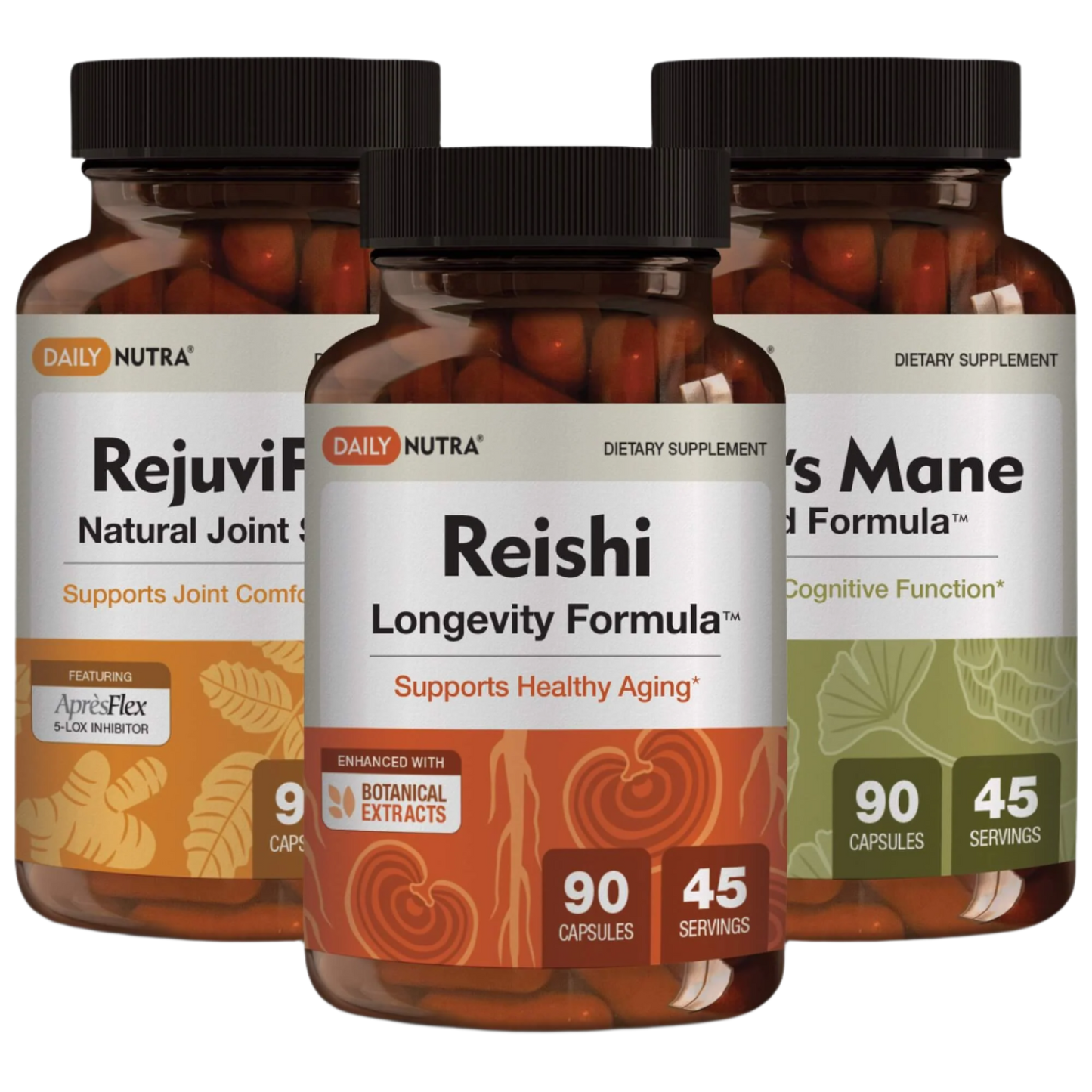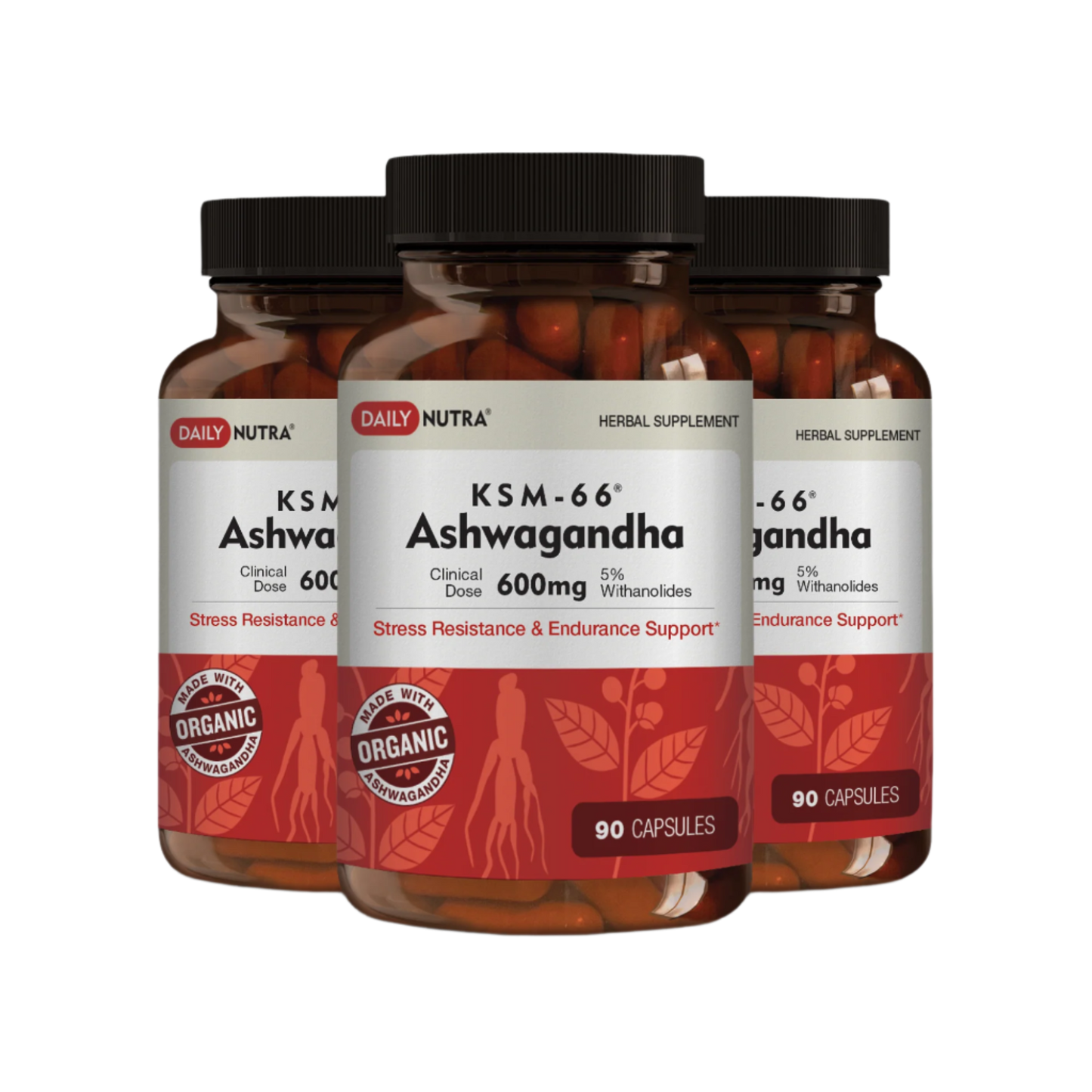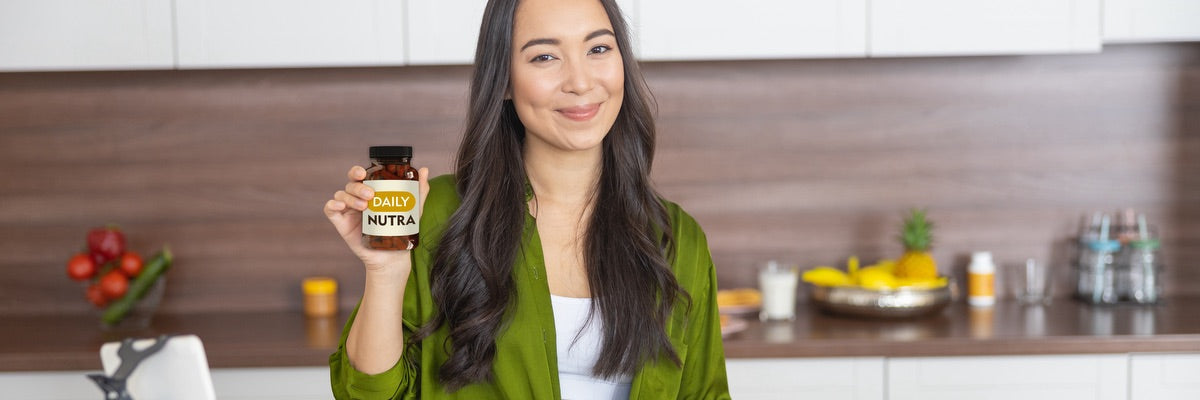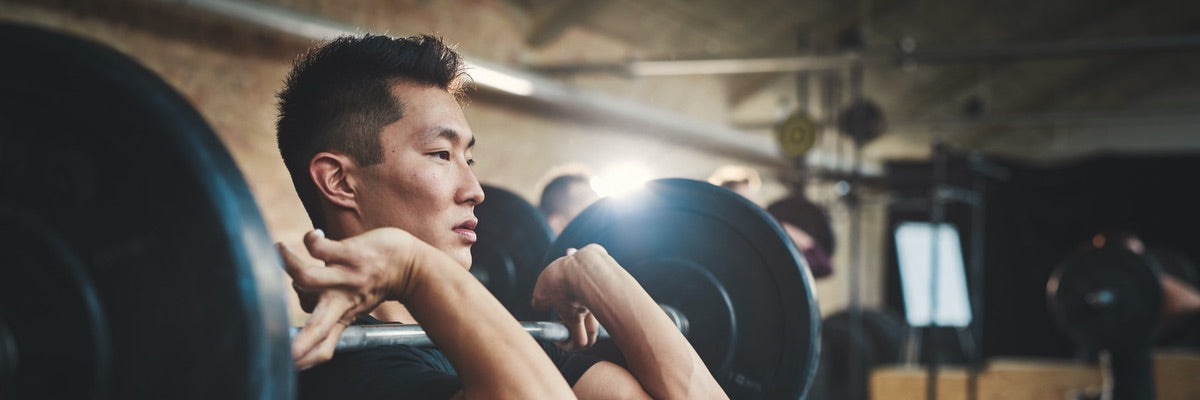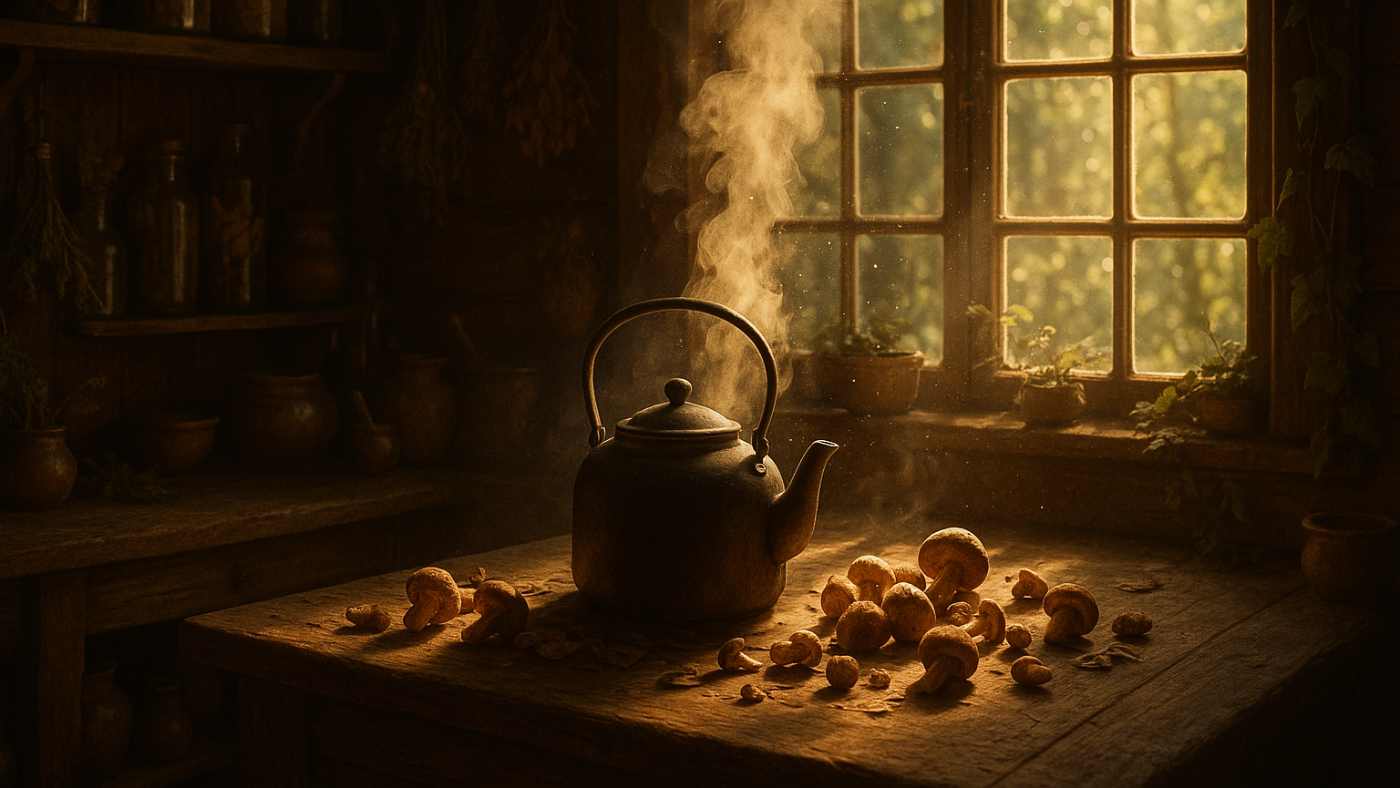
Prior to the existence of wellness influencers, mushrooms were used to heal bodies.
Although capsules and powders have taken over store shelves in recent years, there is a subtle shift taking place in kettles and kitchens all over the world.
It’s the return of the mushroom brew.
Mushroom tea isn’t just a trend. It’s a way to reconnect with the ritual of healing.
It slows you down. It brings intention to your wellness.
And, more importantly, it’s one of the most effective ways to extract the compounds that make mushrooms medicinal in the first place.
When you make mushroom tea the right way, you’re not just sipping earthy liquid.
You’re extracting beta-glucans for immunity, triterpenes for stress, antioxidants for recovery, and prebiotics for gut health (1).
The teabag can wait. This is real functional medicine in a mug.
Which Mushrooms Work Best for Tea?
Not every mushroom belongs in your tea kettle.
The best mushroom teas are made from medicinal varieties like reishi, chaga, turkey tail, lion’s mane, cordyceps, and shiitake (2).
These mushrooms offer deep adaptogenic benefits, from brain support to immune resilience.
Choose mushrooms that are either dried whole, sliced, or ground into coarse chunks.
If you’re using a premade powder, make sure it’s food-grade and water-extracted—not just raw mycelium or myceliated grain (3).
The goal is to pull out bioactive compounds with hot water over time—not just steep for flavor.

Start with High-Quality Dried Mushrooms
If you’re buying dried mushrooms, choose organic sources with transparent testing for heavy metals and molds.
If you’re harvesting wild mushrooms like chaga or turkey tail, dry them completely before using.
This ensures shelf-stability and improves the extraction of active compounds.
You want mushrooms that are crisp, clean, and free from dust or decay.
Think of them like herbal roots, not culinary vegetables.
The Hot Water Extraction Process
Here’s where tea becomes more than a beverage.
When you boil mushrooms in water for an extended time, you're doing what herbalists call a decoction.
It’s not a quick steep—it’s a long, slow simmer that extracts the polysaccharides, antioxidants, and other water-soluble nutrients from dense fungi.
For every cup of water, add one to two teaspoons of dried mushrooms (or powder).
After bringing to a boil, lower the heat to a simmer.
Let it simmer for 20 to 45 minutes.
The longer it steeps, the stronger the brew.
Don’t worry about overcooking. These mushrooms are hardy and benefit from long extraction.
Strain and Customize Your Brew
Pass the tea through cheesecloth or a fine sieve to give it a fragrant, colorful appearance.
You can drink it straight for a medicinal effect—or customize it with ingredients that balance the earthy profile.
Think raw honey, cinnamon sticks, ginger, or lemon peel.
Reishi pairs well with cacao and mint.
Chaga loves vanilla and cinnamon.
Lion’s mane blends beautifully with ginger and turmeric.
Each combination brings new layers of benefit and makes the ritual something you look forward to.

How Often Can You Drink Mushroom Tea?
Daily use is not only safe—it’s encouraged for most people.
Functional mushrooms work best when taken consistently. They build resilience slowly and restore your body’s baseline over time.
Some prefer tea in the morning for clarity and focus. Others wind down with calming brews at night.
You’re not treating symptoms. You’re tuning systems.
Your immune, nervous, and digestive systems all respond to the consistent support of adaptogens.
Why Tea Is Better Than Capsules or Gummies
Capsules may be convenient, but they often skip the most important step: extraction.
When you drink mushroom tea, you’re performing the same process supplement companies use—only you’re doing it fresh and in full control.
That means fewer binders, no fillers, and no guessing whether the ingredients were actually activated.
Plus, the ritual of sipping something warm and nourishing is healing in itself.
It slows you down. It signals care. It reconnects you to a deeper form of wellness that pills can’t replicate.
Final Thoughts
Besides being useful, mushroom tea has other uses. It is basic.
Take advantage of this chance to get away from the chaos, return to the wisdom of whole foods, and give your body the nourishment it needs.
You don’t need fancy gear. You don’t need endless ingredients.
You just need mushrooms, water, time, and intention.
That’s how you turn a daily cup into a long-term transformation.
☕💫Ready to brew your body’s favorite medicine? Put mushrooms in your mug and steep your way to better health 🍄
FAQs on How Mushroom Tea Rewires Your Mornings
What’s the best mushroom to start with for tea?
Reishi or chaga are great entry points. Reishi calms, chaga energizes, and nourishes.
Can I reuse mushrooms for a second brew?
Yes, you can simmer them again within 24 hours. The second brew is lighter but still effective.
Does mushroom tea taste bad?
It’s earthy and bold but can be mellowed with herbs, spices, or honey.
Is it safe to drink mushroom tea daily?
For most people, yes. It supports long-term immunity and stress resilience when used consistently.
Can I combine multiple mushrooms in one tea?
Absolutely. Blending mushrooms creates a more balanced adaptogenic effect.
Related Studies
1. Title: Beta-Glucans from Fungi: Biological and Health-Promoting Properties
This review highlights how mushroom-derived β‑glucans (β‑1,3/1,6) act as immunomodulators, aiding infection defense and reducing inflammation.
DOI: doi/pdf/2072-6643/13/11/3960
2. Title: Immune-stimulatory potential of hot water extracts of selected edible mushrooms
Clinical data show that hot‑water extracts from mushrooms like Pleurotus contain β‑glucans that stimulate macrophages—supporting adaptogenic and immune effects.
DOI: doi/pdf/10.1080/09540105.2017.1293011
3. Title: Evaluation of Immune Modulation by β‑1,3;1,6 D‑Glucan Derived from Reishi
Demonstrates that hot‑water extraction effectively breaks down the chitin cell wall, releasing β‑glucans and maximizing immunomodulatory activity
DOI: doi/pdf/52.11/09540105.2017.1293902
